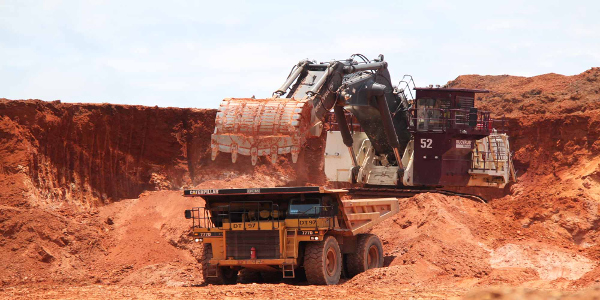New Delhi: Russian scientists from Tomsk Polytechnic University (TPU) together with the Indian Institute of Technology, Bombay (IIT Bombay) have been studying one of world’s largest deposits of iron ore, the Bakchar ironstone deposit located in the Tomsk oblast, Russia, and made a new discovery new that may impact future of the mining industry.
About 95 million years ago, there was a shallow warm sea at the territory of the Bakchar ironstone deposit (in the Tomsk oblast, Russia). Scientists are trying to find an answer to a global question now: how such a huge amount of iron ore – over 25 billion tons – was accumulated in this deposit.
Russian and Indian researchers have published a paper detailing their findings. They refute a widespread theory that iron in such deposits came into the sea from the eroded mountainous areas of the ancient continents. Experts instead suggest that emissions of the solutions containing iron could have broken through the seabed and they could be the source of iron.
The Bakchar ironstone deposit is known as one of the most promising in the West Siberia iron ore basin, which in turn is one of the world’s largest deposits. The total reserves of the West Siberia iron ore basin have been estimated at 400 billion tons. By compression, the United Nations Framework Classification (UNFC) of mineral resources indicates that total resources of iron ore in India is around 28, 5 billion tons. Western Australia is the world’s largest iron ore producer and exporter, accounting for 38 per cent of global production and 53 per cent of global seaborne exports in 2016. The region’s estimated iron ore reserves are a little over 60 billion tons. However, to date, there is no ore mining at this Russian deposit.
Maksim Rudmin, Associated Professor, TPU Geology Department, explained: ‘This geological object is truly unique by scale. There is no precise answer yet where such a great amount of iron came from. The oolitic iron deposit was formed 90 to 56 million years ago within the ancient sea in quiet seashore conditions.”
Rudmin said that the most common theory claims that iron was transported into the sea by the erosion of ancient mountainous areas by the river systems. A careful study of the geological situation and ore samples from the deposit allows us to disagree with it. First, currently there are no traces of giant sources of iron in the regions which were eroded in the period when the deposit was formed. Second, no major intermediate deposits were found in the areas of ancient rivers that should have transported iron. Yet another proof the coastline of the ancient sea repeatedly shifted while the Bakchar deposit was formed at a certain location, though its borders also had to shift and stretch. Scientists have established a link between past warming events and the forming of ore deposits, particularly iron ore deposits.
Santanu Banerjee, Professor of the Department of Earth Sciences, IIT Bombay, noted that Cretaceous to Eocene was a time of extreme warming, global sea-level rise and gas hydrate dissociation. “The past warming conditions have led to the increasing of methane and carbon dioxide emissions from marine sediments, causing the precipitation of iron ores.” Inclusions of methane bubbles in the ore from the Bakchar deposit were also found. Scientists believe that these could occur if in this area there were upward methane fluxes from the bottom through the sediments.
Maksim Rudmin said: “It is possible that different elements, including iron, could have come together with methane and water. Thus, in the ore samples, we found mineral forms of metals that accompany ore accumulation, i.e. lead and zinc sulfides (galena and wurtzite), lead selenide (claustite), cobalt and nickel arsenide and others. Their origin is beyond doubt. They got in the ore via the emission of gas-liquid fluids from the underlying layers.”
If the further study of the West Siberian Iron Ore Basin confirms the theory, it could bring a fresh look at the exploration methods both for similar iron deposits and genetically related minerals, for example, lead and zinc deposits that are significant for industry.
According to Prof. Santanu Banerjee, current research results give an indication that most iron ore in Russia was formed within a short period, in geologic time, in Cretaceous and Palaeogene. “This is a very crucial clue for exploration. The results of our research have direct relevance for industry, as they provide predictability for further iron ore exploration,” he said.
Source: ET
Image Courtesy:Mining Technology
You may also like
-
New Heat-Based Approach To Cancer Treatment Can Reduce Chemotherapy Doses
-
Scientists Take A Major Step Towards Unification Of Classical & Quantum Gravity
-
India Graphene Engineering and Innovation Centre (IGEIC) Under the Vision of Viksit Bharat@2047 Launched
-
New High-Performance Gas Sensor can Monitor Low Level Nitrogen Oxides Pollution
-
Antidepressant Drug can be Repurposed for Treating Breast Cancer
